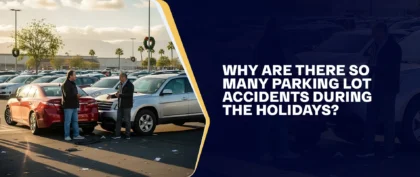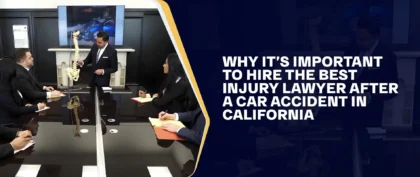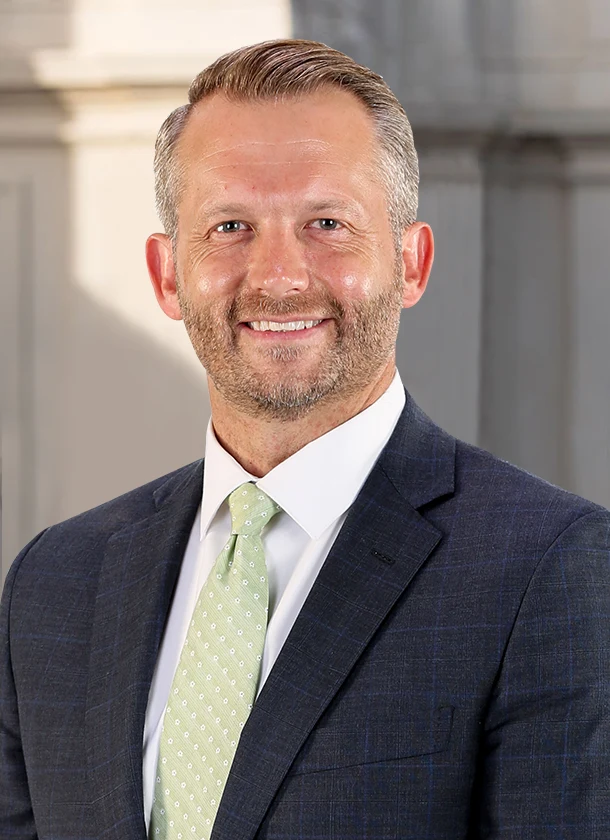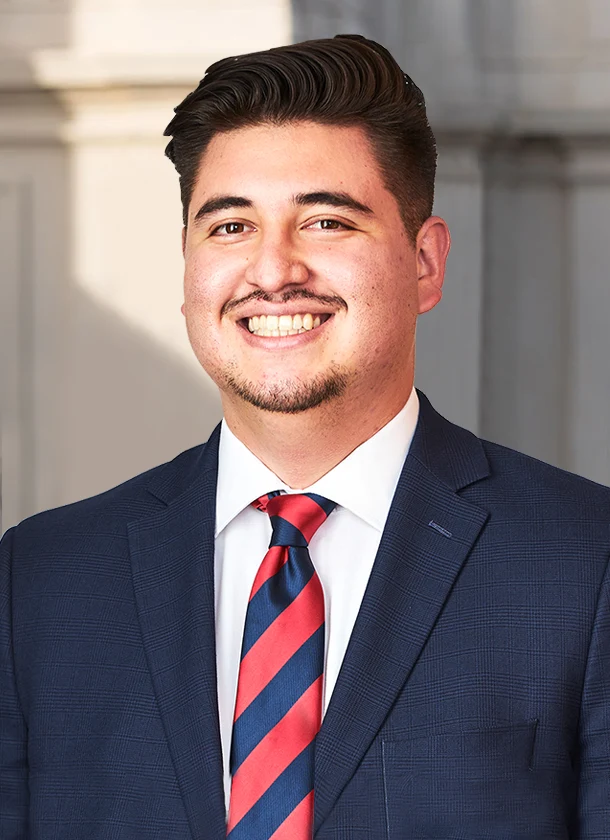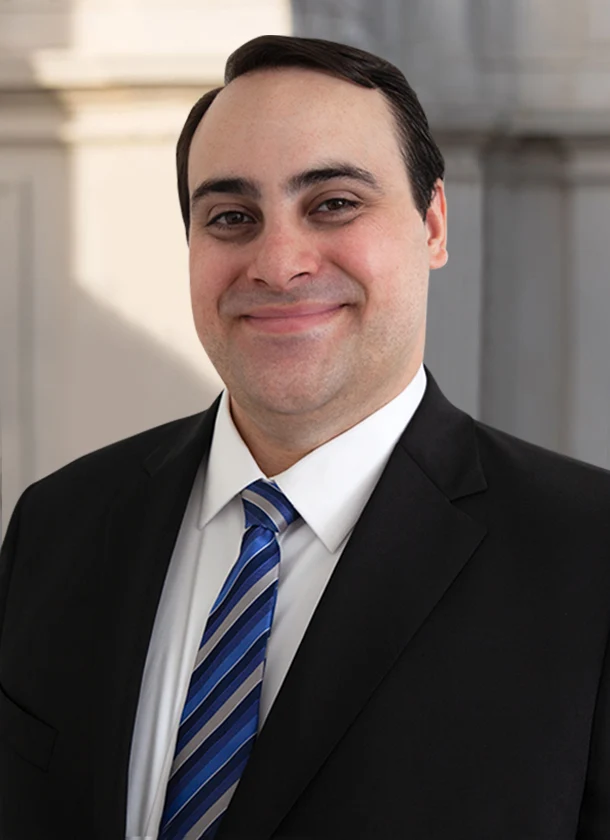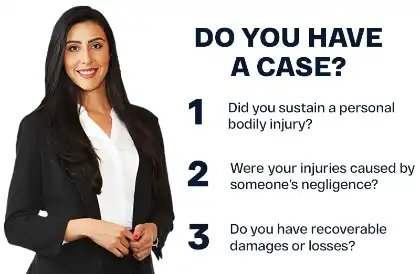TL;DR: No, California is not a no-fault state. It follows an at-fault system where the driver responsible for the crash may be held liable for injuries and damages. Learn how this could affect insurance claims and your options for pursuing compensation.
Table of Contents
Automobile insurance operates a little differently from state to state. While California is considered an at-fault state for car insurance claims, there are certain other states in the country that are no-fault. People who live in no-fault states do not file injury claims with insurance companies for other drivers. Instead, they must file a claim with their own insurer after purchasing personal injury protection (PIP) insurance.
The intention of the no-fault system is to lower the cost of automobile insurance by removing small claims from courts. The 12 states with no-fault insurance laws include Florida, Hawaii, Kansas, Kentucky, Massachusetts, Michigan, Minnesota, New Jersey, New York, North Dakota, Pennsylvania, and Utah. Three of those states let drivers choose between limited tort restrictions of no-fault insurance and full tort liability (Kentucky, New Jersey, and Pennsylvania). On the other hand, 10 states let drivers add PIP to their policies without requiring it (Arkansas, Delaware, Maryland, New Hampshire, Oregon, South Dakota, Texas, Virginia, Washington, and Wisconsin).
California is an at-fault state, meaning drivers must file claims against the party responsible for the accident. In contrast, in no-fault states, drivers typically seek compensation through their own insurance. However, people cannot sue other drivers unless their injuries satisfy a tort liability threshold that is either verbal, for death or disfigurement, or monetary. PIP coverage can help pay for medical bills, health insurance deductibles, lost income, childcare, funeral expenses, and other necessary costs.
After a car accident caused by a careless driver, victims often deal with medical bills, loss of income, talking to insurers, and other issues. Experienced California car accident lawyers can help victims seek damages after a crash. Arash Law can review your case and explain your options.
Defining “No-Fault Accident”
No-fault accidents imply that insurance companies spend much less time identifying who was at fault for a crash compared to the comparative fault system. In a no-fault setup, every driver involved in a collision will file claims with their own insurance company.
Drivers in no-fault states still must carry liability coverage, meaning that an at-fault driver’s insurance company will still have to pay for damage to another driver’s vehicle. PIP coverage will usually pay for medical bills or lost income up to a person’s policy limits, regardless of who caused the accident.
While the seeming benefit of living in a no-fault state is that a person can file a claim with their own insurance company to seek coverage for their losses without having to prove fault, the catch to the system is that people cannot sue another driver unless their case satisfies certain thresholds. Even in no-fault states, a negligent driver’s insurance company could be responsible for paying damages.
Vehicle Damage Payments In No-Fault States
No-fault laws do not extend extra coverage to a person in an accident. Bodily injury liability coverage will balance out as necessary with the other side. Immediately following an accident, a person files a claim for resulting bills with their insurance company. An insurer may then pay based on the coverage limits a car accident victim has been paying for.
The amount of coverage a person is eligible for is determined by their PIP coverage. A driver who is compensated through their PIP coverage may only be able to sue for additional damages if their injuries meet certain monetary or severity thresholds defined by state law.
Some states allow victims to file lawsuits when certain monetary thresholds or injury severity, also known as descriptive thresholds, are met because of an accident. Monetary threshold states currently include Hawaii, Kansas, Kentucky, Massachusetts, Minnesota, North Dakota, and Utah.
Some severe injuries may allow for lawsuits to be filed in no-fault states. Injury threshold states include Florida, Michigan, New Jersey, and New York.
Property damage may not always be covered under no-fault laws. To seek compensation for damaged property, a person usually has to deal with an insurance company for the driver who caused the damage.
“Add-on” coverage is also available in some states. This coverage will allow people to purchase PIP. However, there is still a tort system for car accidents in these states, meaning a person can still sue and be sued.
Is California A No-Fault State?
No, California is not a no-fault state. California has at-fault car insurance laws that mean a driver found to be at fault for an accident is responsible for their share of the costs, including damages and injuries suffered by the other party.
While injured drivers can still file claims with another driver’s insurance company, they may also retain the right to sue for additional damages.
Comparing No-Fault And At-Fault Insurance
The primary difference between at-fault and no-fault insurance coverage is whether the victim has the right to file a lawsuit.
In no-fault insurance, each insurance provider compensates its insured member or policyholder for minor injuries with no regard for who was at fault for the accident. An at-fault insurance, on the other hand, is a type of insurance program based on tort responsibility. Each individual insurance company pays for the damages suffered according to the degree of fault of each party.
California is an at-fault state. However, it uses a comparative fault system when it comes to motor vehicle accidents. As long as a victim is not entirely at fault, he or she may be able to pursue compensation by bringing a claim against the person partially responsible for his or her injuries.
In a fault state, the driver who caused the accident is responsible for the damages caused. You file a claim against the at-fault party through his or her insurance company. The insurance company reviews the claim. If the insurer approves the claim, it may pay for your damages up to the limits of the insurance policy.
No-fault states still have certain insurance requirements.
Florida
- $10,000 property damage liability per accident
- $10,000 personal injury protection per person
Hawaii
- $20,000 bodily injury liability per person
- $40,000 bodily injury liability per accident
- $10,000 property damage liability per accident
- $10,000 personal injury protection per person
Kansas
- $25,000 bodily injury liability per person
- $50,000 bodily injury liability per accident
- $25,000 property damage liability per accident
- $25,000 uninsured/underinsured motorist coverage per person
- $50,000 uninsured/underinsured motorist coverage per accident
PIP Per Person
- $4,500 per person for medical expenses
- $900 monthly for up to a year of disability or loss of income coverage
- $25 a day for in-home services
- $4,500 for rehabilitation-related expenses
- $2,000 for funeral, burial, or cremation expenses
Survivors Benefits
- $900 per month for a year for disability or loss of income
- $25 per day for in-home services
Kentucky
- $25,000 bodily injury liability per person
- $50,000 bodily injury liability per accident
- $25,000 property damage liability per accident
- $10,000 personal injury protection per person
Massachusetts
- $20,000 bodily injury liability per person
- $40,000 bodily injury liability per accident
- $5,000 property damage liability per accident
- $20,000 uninsured/underinsured motorist coverage per person
- $40,000 uninsured/underinsured motorist coverage per accident
- $8,000 personal injury protection per accident
Michigan
- $20,000 bodily injury liability per person
- $40,000 bodily injury liability per accident
- Per-person medical payments coverage
- $1 million property protection
Minnesota
- $30,000 bodily injury liability per person
- $60,000 bodily injury liability per accident
- $10,000 property damage liability per accident
- $25,000 uninsured/underinsured motorist coverage per person
- $50,000 uninsured/underinsured motorist coverage per accident
- $40,000 personal injury protection per person
New Jersey
- $5,000 property damage liability per accident
- $1,000 personal injury protection per person
New York
- $25,000 bodily injury liability per person
- $50,000 bodily injury liability per accident
- $10,000 property damage liability per accident
- $25,000 uninsured/underinsured motorist coverage per person
- $50,000 uninsured/underinsured motorist coverage per accident
- $50,000 personal injury protection per person
Other
- $50,000 liability for death per person.
- $100,000 liability for death per accident.
North Dakota
- $25,000 bodily injury liability per person
- $50,000 bodily injury liability per accident
- $25,000 property damage liability per accident
- $25,000 uninsured/underinsured motorist coverage per person
- $50,000 uninsured/underinsured motorist coverage per accident
- $30,000 personal injury protection per person
Pennsylvania
- $15,000 bodily injury liability per person
- $30,000 bodily injury liability per accident
- $5,000 property damage liability per accident
- $5,000 medical payments coverage
Utah
- $25,000 bodily injury liability per person
- $65,000 bodily injury liability per accident
- $15,000 property damage liability per accident
- $3,000 personal injury protection per person
The PIP claims process is intended to streamline how victims pursue compensation because they do not have to worry about proving fault for an injury claim. People can file claims and usually seek compensation without bearing the burden of proof.
Like California, most other states are at fault, meaning that each insurance company involved will have to pay damages according to the degree of fault involved in a crash. A driver who causes an accident is usually liable for all damages stemming from the accident.
Requirements Of No-Fault Laws
No-fault insurance laws still require drivers to carry PIP in addition to liability insurance with their automobile insurance policy. People who have insurance in no-fault states may thus have an easier time seeking damages like medical bills because their own PIP coverage typically covers these costs.
While benefits are provided at seemingly no cost to another driver, the result is that no-fault insurance can be more expensive. In California, an insurer will usually pay for damages stemming from an accident in accordance with the degree of fault for each driver.
California residents may pursue legal action if there is evidence that their insurance claim has not been handled fairly or in accordance with the policy terms. Negligent drivers are typically responsible for paying all damages suffered by other parties, and disputes could arise during settlement negotiations.
How Fault Works After Car Accidents In California
Because California is not a no-fault insurance state, determining fault for a motor vehicle accident is a necessary part of the investigation process. People who have collision and comprehensive policies may get coverage for vehicle damage after an accident.
Police reports and witness statements can play a major role in accidents in at-fault states, and insurance companies will usually send agents to the scenes of crashes to conduct investigations. California uses a comparative fault system that allows people to file lawsuits regardless of their percentage of fault, meaning even a person who was 99 percent responsible for an accident can still file a lawsuit, although people will have their awards reduced by their percentage of responsibility, so a person who is awarded $100,000 but is found to have been 50 percent responsible will see their award reduced by $50,000 and ultimately recover $50,000.
The claims process will be much more straightforward for people in no-fault states because they only file claims with their own insurance companies, and the insurers will then determine the medical bills and property damage costs, such as what victims pay body shops to repair their cars. PIP coverage plays a major role in determining how much compensation these people can recover.
When people get injured in car accidents in California, they can potentially file claims with another party’s insurer, but the process may take longer, especially if a settlement cannot be reached. Working with another person’s insurance company might also mean that some related expenses, such as car rentals, may not be covered.
How No-Fault Laws Work
When people are injured in car accidents in no-fault states, they must file claims through their own insurers. No-fault states often mandate that PIP coverage be offered.
A PIP policy typically reimburses people for medical bills, regardless of which party caused an accident. There will be no need for a person to prove which party was at fault.
No-fault states will handle property damage differently, however. A person may need to open a claim under their collision coverage if they added it to their policy, and some states may require people to file claims for property damage with another driver’s property damage liability coverage.
A key limitation in no-fault states is that individuals usually cannot pursue non-economic damages, such as pain and suffering, emotional distress, or long-term disability, unless their injuries meet specific severity thresholds.
Certain no-fault states let injured people pursue claims against at-fault parties only when their injury expenses exceed certain dollar amounts or their injuries are included on the state’s list of catastrophic injuries.
Establishing Fault In Automobile Accidents In California

California utilizes a tort system for motor vehicle accident claims, so the fault is often determined by the insurance companies handling accident claims. Insurers will conduct their own investigations to determine who was at fault for a crash, and it is possible for both drivers to share a certain degree of fault for an accident.
Determining fault can be tricky because there can be instances in which one driver’s actions cause another driver to take an action leading to a completely different accident, not involving the at-fault driver. In such cases, a person or their insurance company will need to prove that another driver was the cause of an accident, even though they were not actually involved in a collision.
An insurance company typically has 15 days to acknowledge a claim in California. Once an insurer acknowledges a claim and receives documentation and proof, they have up to 40 days to approve or deny a claim.
If a person agrees to accept a settlement, the insurance company will have 30 days to make the payment. Medical expenses will usually be paid directly to medical providers.
There can be much longer delays when it comes to pursuing compensation for motor vehicle damage or funeral expenses. Lengthy delays could potentially give victims grounds to file lawsuits.
Determining fault for an accident can be based primarily on the police report completed after a crash, but there may be other factors that help dictate fault in these cases, such as witness statements, dashboard cameras, and other sources.
Required Automobile Coverage In California
As of 2025, California follows the 30/60/15 rule, meaning all drivers must carry insurance that meets the minimum requirements under California Insurance Code § 11580.1b: $30,000 for injury or death to one person, $60,000 for injury or death to multiple people, and $15,000 for property damage.
Acceptable insurance in California includes a motor vehicle liability insurance policy, a cash deposit of $35,000 with the Department of Motor Vehicles (DMV), a DMV-issued self-insurance certificate, or a surety bond for $35,000 from a company licensed to do business in California.
People in California also have the right to purchase additional coverage, such as comprehensive or collision coverage. Uninsured motorist (UM) coverage, underinsured motorist (UIM) coverage, medical payments coverage, and physical damage coverage are other common kinds of additional coverage.
Frequently Asked Questions
Can Californians Use Their Cars Without Insurance?
The short answer is no, Californians cannot operate motor vehicles without insurance. If the California DMV does not receive proof of insurance for a vehicle, it will suspend the vehicle’s registration, and the vehicle cannot be operated or parked on public roadways until proof of insurance is submitted.
What Happens When A Person Does Not Have Liability Coverage?
Driving without insurance in California will usually mean that a person receives a ticket. First-time offenders usually have to pay fines of $100 to $200, as well as penalty assessment fees that double or triple the fine amount. Second-time offenders will face fines of $200 to $500 plus penalty assessment fees that can make the final cost well over $1,000.
How Is Liability Coverage Provided?
An insurance company should provide people with cards that show proof of insurance. The card will list the insured vehicle as well as the name of the policy owner with a policy number and the dates the policy began and when it will end.
What Happens When Accidents Cost More Than Liability Limits?
When injured victims reach their insurance limits, they may be able to sue the other drivers for excess costs, meaning negligent drivers might have to personally pay for the losses they caused.
Should People Get Higher Limits Than Required?
It can be a good idea to purchase an insurance policy that exceeds state minimums because it can help protect a person’s assets. In a high-cost accident for which damages quickly satisfy state minimums, a driver can become personally liable for any excess amounts.
What To Do When You Are Involved In An Accident
Pretend you are on the street when you see a car hit the rear end of another vehicle. When determining what you should do, there will be certain steps to follow that may include:
- Protecting Yourself — Check if you are in a safe location after witnessing accidents before stopping or exiting vehicles.
- Call for Assistance — Immediately call 911 when you witness a serious car accident, especially if you think there were injuries or deaths.
- Provide Help — If you enter an accident scene to help, be extremely cautious about other vehicles and only move a person when it is necessary for their safety.
- Do Not Be Afraid to Help — California has a Good Samaritan Law protecting people who are first to the scene of auto accidents.
In California, people do not have any duty to rescue or assist other people who are in danger or emergency situations. California Health and Safety Code § 1799.102 establishes what is known as the “Good Samaritan Law,” under which no person who, in good faith, renders emergency medical or nonmedical care at the scene of an emergency can be liable for any civil damages resulting from any act or omission.
People still need to exercise a degree of caution in determining whether to render assistance in these cases. You should not move another person unless it is necessary for their survival, as moving an injured person can possibly exacerbate their injuries.
What To Do Before Filing An Insurance Claim In California
Don’t Admit Fault
After any car accident, remain at the scene of the crash. Don’t admit fault, apologize, or say anything else that can be perceived as admitting guilt.
Report The Accident To The Authorities
People should determine if there were any injuries and report their crash to the local police. People must report accidents when there are injuries, deaths, or over $1,000 in property damage.
Contacting the police will create an official report for a crash that often helps with insurance claims later on. People should get the other driver’s information, including their insurance company and policy number.
Do Not Delay Medical Treatment
All people involved should go to a hospital as soon as possible, even when they do not think they have suffered an injury. Many injuries involve delayed symptoms, and some might require immediate medical attention.
Delaying treatment can lead to disputes regarding the severity of your injuries or arguments that you made them worse by delaying medical care. You will want to contact an insurance company as soon as you begin receiving treatment for your injuries.
Inform Your Insurance Company
Contact the insurance company for the at-fault party after a collision. If you are unsure who the at-fault party is, you can contact your own insurer and tell them you do not know who was at fault, as the police may assign fault later.
Engage With Experienced Car Accident Lawyers
Consider working with an attorney with experience pursuing car accident cases. Arash Law has handled numerous motor vehicle crash claims throughout California and helps injured clients pursue compensation for the losses these accidents cause.
Frequent Causes Of Car Accidents In California
According to Policygenius, California had the most fatal car accidents of any state in 2020, with more than 3,500 fatal crashes and over 3,800 fatalities. Car accidents are extremely common in the Golden State.
Since California is an at-fault state, the police responding to the scene, as well as the drivers involved, will be seeking evidence that a driver was at fault for the crash. Types of crashes that usually involve evidence of negligence include:
- Driving under the influence (DUI)
- Driver fatigue
- Distracted driving
- Aggressive driving
- Reckless driving
- Tailgating
- Improper turns
- Road rage
Other causes of crashes include:
- Inclement weather.
- Defective motor vehicle parts.
- Poor road conditions.
While a police report plays a role in determining fault, it is not always conclusive. A car accident lawyer can conduct an independent investigation, gather supporting evidence, and challenge inaccurate findings to help you pursue compensation.
Contact Our Skilled California Car Accident Lawyers
If you’ve been injured in a car accident in California, a personal injury lawyer can guide you in filing a claim for damages and protect your rights throughout the process. Over the decades, Arash Law has helped injured clients across California pursue compensation for their injuries and related losses. We have the resources and experience to handle a wide range of personal injury cases, including complex car accident claims.
Our firm can conduct an independent investigation into your crash and work with experts like accident reconstructionists to establish the details of the accident and your injuries. We can also assist clients in obtaining the necessary medical treatment to address their injuries.
We serve clients throughout California, including cities like Los Angeles, San Diego, Irvine, Bakersfield, Fresno, Riverside, Oakland, Stockton, San Bernardino, Compton, and more. Our legal team is available to answer any questions you may have about your car accident.
We can come to you in your hospital room or home if you are experiencing mobility issues due to your injuries. Call us at (888) 488-1391 or contact us online to schedule a free initial consultation.



